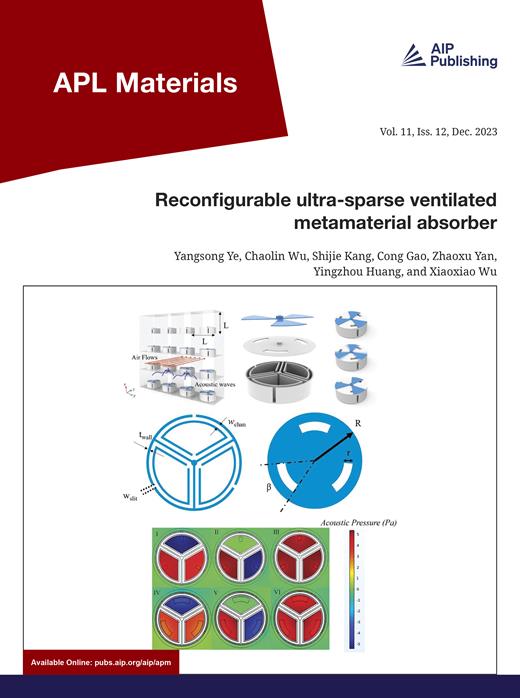Spin magnetotransport in rare-earth iron garnet (REIG)/Pt: Effects of modulated bulk and REIG/Pt interfaces
IF 5.3
2区 材料科学
Q2 MATERIALS SCIENCE, MULTIDISCIPLINARY
引用次数: 0
Abstract
The intrinsic magnetization compensation behaviors of rare-earth iron garnets (REIGs) make the material promising for applications in ultrafast spin storage devices. REIG/heavy metal heterostructures such as TbIG/Pt often display two sign crossovers of anomalous Hall effect resistance with varying temperatures. One of these crossovers is attributed to the magnetization compensation of REIG, and the other to the competition between the magnetic proximity effect and the spin Hall effect. Here, we design trilayer REIG heterostructures based on two rare-earth species (Tb and Eu). We modulate the layer stacking of the TbIG/EuIG/TbIG sandwich with a fixed total thickness and explore the contributions of REIG bulk and REIG/Pt interfaces on these two crossover points. As TbIG gradually moves away from Pt, the compensation temperature shows some fluctuations. However, when TbIG is entirely out of contact with Pt, the second crossover point undergoes a change that shows REIG/Pt interface dependency. The results highlight the dominance of REIG bulk on the compensation behavior and the interface sensitivity of the second crossover point. This study provides a reference for designing controllable spintronics devices, such as magnon valve applications.稀土铁榴石(REIG)/铂中的自旋磁传输:调制体和 REIG/Pt 界面的影响
稀土铁榴石(REIGs)的内在磁化补偿行为使这种材料有望应用于超快自旋存储设备。稀土铁榴石/重金属异质结构(如 TbIG/Pt)通常会随着温度的变化而出现霍尔效应电阻的两种符号交叉。其中一个交叉点归因于 REIG 的磁化补偿,另一个交叉点归因于磁接近效应和自旋霍尔效应之间的竞争。在这里,我们设计了基于两种稀土(铽和铕)的三层 REIG 异质结构。我们以固定的总厚度调节 TbIG/EuIG/TbIG 夹层的层堆叠,并探索 REIG 体和 REIG/Pt 界面对这两个交叉点的贡献。随着 TbIG 逐渐远离铂,补偿温度出现了一些波动。然而,当 TbIG 与铂完全不接触时,第二个交叉点发生了变化,显示出 REIG/Pt 界面的依赖性。结果凸显了 REIG 体块对补偿行为的主导作用以及第二个交叉点的界面敏感性。这项研究为设计可控自旋电子器件(如磁子阀应用)提供了参考。
本文章由计算机程序翻译,如有差异,请以英文原文为准。
求助全文
约1分钟内获得全文
求助全文
来源期刊

APL Materials
NANOSCIENCE & NANOTECHNOLOGYMATERIALS SCIE-MATERIALS SCIENCE, MULTIDISCIPLINARY
CiteScore
9.60
自引率
3.30%
发文量
199
审稿时长
2 months
期刊介绍:
APL Materials features original, experimental research on significant topical issues within the field of materials science. In order to highlight research at the forefront of materials science, emphasis is given to the quality and timeliness of the work. The journal considers theory or calculation when the work is particularly timely and relevant to applications.
In addition to regular articles, the journal also publishes Special Topics, which report on cutting-edge areas in materials science, such as Perovskite Solar Cells, 2D Materials, and Beyond Lithium Ion Batteries.
 求助内容:
求助内容: 应助结果提醒方式:
应助结果提醒方式:


